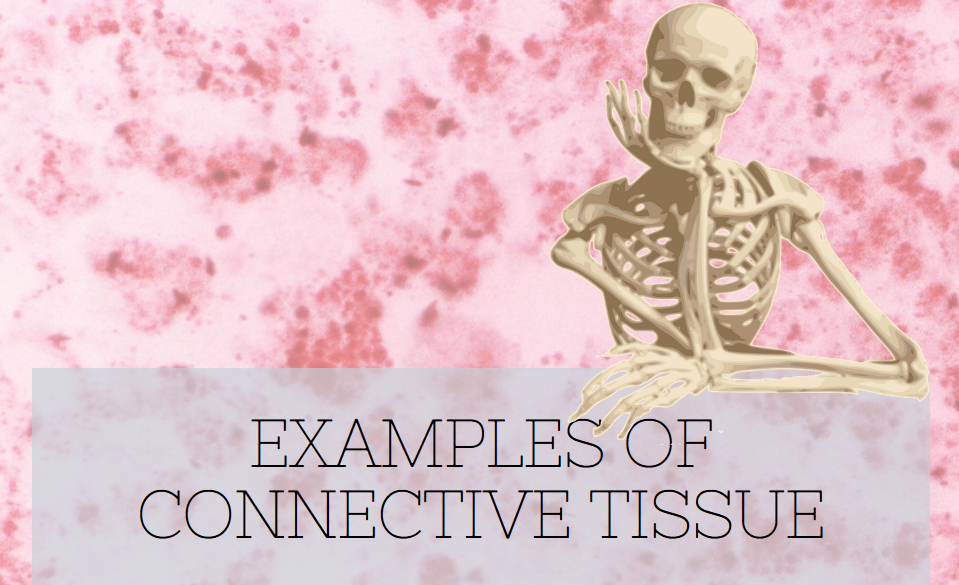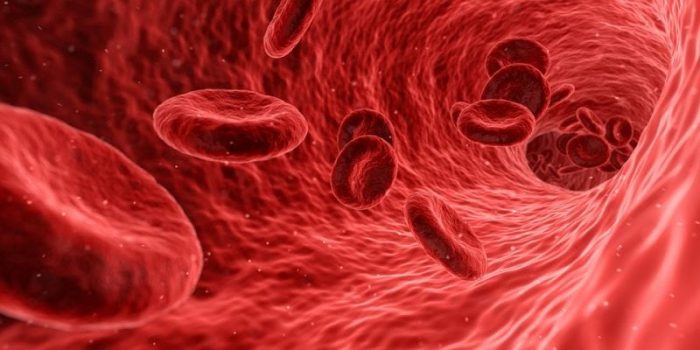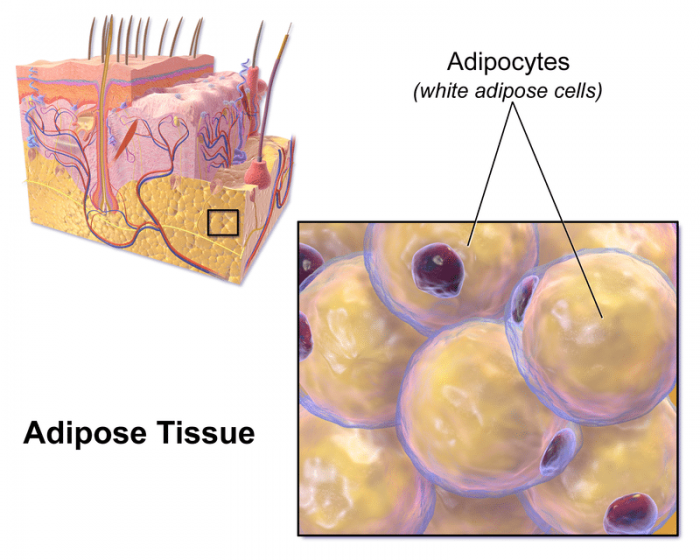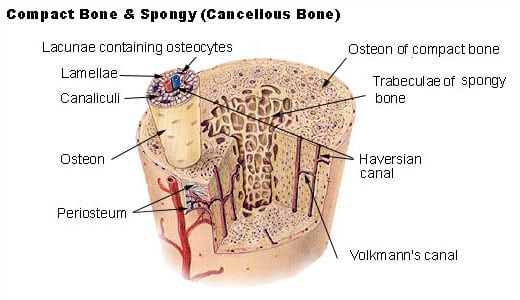
The types of connective tissue include cartilage, bone, collagen fibers, reticular fibers, elastic fibers, blood, hemopoietic/lymphatic, adipose tissue, bone marrow, and lymphoid tissue. Each connective tissue acts to support and hold your body together and, in some instances, transmit substances around your body.
The human body is full of various types of connective tissue, the function of which is to bind together the other tissue of the body and give those tissues support. Common examples of connective tissues include tendons, adipose tissue, and cartilage. To understand why connective tissue is so important, let’s take a close look at the various kinds of connective tissue, along with some examples.
Facts About Connective Tissue
Connective tissue is the most common kind of tissue out of all of the primary kinds of tissue (epithelial, muscular, connective, and nervous). Connective tissue serves a number of different purposes, including protecting the body, insulating the body, storing excess or reserve energy, supporting and binding the body parts together, and transporting substances around the body. There are three main components to connective tissue: cells, ground substance, and fibers. The fibers and ground substance of connective tissue create what is known as the extracellular matrix.
There are two different forms of connective tissue: specialized connective tissue and soft connective tissue. Connective tissue can possess varying vascularity levels. While some connective tissues like bone are heavily supplied by blood vessels and thus are heavily vascular, cartilage is an avascular connective tissue.
Fibrous Tissue
Fibrous tissue is the kind of connective tissue that provides strength and stability to the inner layer of one’s skin. This support is critical because, without it, the skin wouldn’t be able to adjust to the force created by the movement of the joints. Fibrous tissue has cells known as fibroblast cells, made out of tiny, interconnected fibers (hence “fibrous tissue”). Fibrous tissue is very dense, with the tissue’s extracellular substances being made up largely of irregular or parallel clumps and bundles of fibers. There’s very little ground substance in the extracellular matrix of fibrous tissue.
Elastic Tissue
Elastic connective tissue, as the name implies, helps the body maintain homeostasis by regulating blood pressure and helping the body exhale normally. The extracellular matrix found in elastic tissue is made out of only a limited amount of ground substance. The matrix is firm yet still very flexible. A network of elastic fibers and chondrocyte cells are linked together to create the connective tissue.
Lymphatic Or Hematopoietic Tissue
Hematopoietic tissue is a fluid connective tissue, and so is the lymphatic tissue. The lymphatic tissue has many lymphocytes in it, which are accessory cells like reticular cells and macrophages. Lymph nodes, adenoids, the spleen, and tonsils are all examples of lymphatic tissue. Hematopoietic tissue is involved in the production of blood cells and the maintenance of the immunological system. Leukocytes are found in the hematopoietic tissue, which is made out of many fibers and form during the clotting process.
Blood Tissue

Photo: qimono via Pixabay, CC0
Though you may not have known it, your blood is a type of tissue. Blood is also known as vascular tissue, and it’s also a form of connective tissue. It’s considered a special type of connective tissue. Blood connective tissue is comprised of three different kinds of cells: leukocytes, thrombocytes, and erythrocytes. The fibers which compose the connective tissue are also soluble proteins that form during the clotting process, much like those found in the hematopoietic tissue. The extracellular substance found in the connective blood tissue is blood plasma, but only in vertebrates.
Adipose Tissue

Photo: By BruceBlaus. Blausen.com staff (2014). “Medical gallery of Blausen Medical 2014”. WikiJournal of Medicine 1 (2). DOI:10.15347/wjm/2014.010. ISSN 2002-4436. – Own work, CC BY 3.0, https://commons.wikimedia.org/w/index.php?curid=28761795
Adipose tissue is yet another supportive connective tissue. The function of adipose tissue is to provide cushioning to other parts of the body, though it also stores fat and energy for later use. Adipose tissue is made out of reticular fibers and reticular cells. Adipose tissue’s extracellular substance is made primarily out of tightly bundled cells, with a small amount of ground substance in between. Humans have their vascular tissue mainly in their bone marrow, breast tissue, surrounding their internal organs, and beneath their skin.
Bone Tissue

U.S. National Cancer Institute’s Surveillance, Epidemiology and End Results (SEER) Program, Public Domain
Bones are another type of connective tissue, though, like blood, you may not think of them as such. Bones are osseous tissue, and while the common image of bones is hard and dense, they can be either spongy or dense. Bone tissue is made out of osteocytes or osteoblasts. The connective tissue of bones is made primarily out of collagen fibers and has a firm ground substance. Bone tissue is made mainly out of calcium phosphate in a specific chemical formation referred to as hydroxyapatite.
Cartilage Tissue
Cartilage is a type of connective tissue made out of chondrocyte cells. Cartilage is fairly dense when compared to other types of connective tissue, and there are various types of cartilage. The different kinds of cartilage include elastic cartilage, fibrocartilage, and hyaline cartilage. Cartilage tissue has various fibers in it, like elastic fibers and collagen. These connective cartilage tissues have only a small amount of ground substance, and depending on the type of cartilage the extracellular matrix can be either flexible or semisolid.
Dense Regular/Dense Irregular Tissue
Two other types of connective tissue are dense regular tissue and dense irregular tissue. Dense regular tissue is made out of tightly packed clumps of collagen fibers, running in parallel directions. The fibers are flexible and capable of adapting to pressure. Tendons, ligaments, and aponeurosis are made out of collagen and the tissue creates fascia, a certain type of fibrous membrane that wraps around the blood vessels, nerves and muscles of the body.
Dense irregular tissue, meanwhile, is made out of the same structural components as dense regular tissue. Despite this, the collections of collagen fibers are substantially thicker and arranged in a more random fashion than in the case of dense irregular tissue. Dense irregular tissue is usually found in areas of the body where tension is applied from multiple directions.









